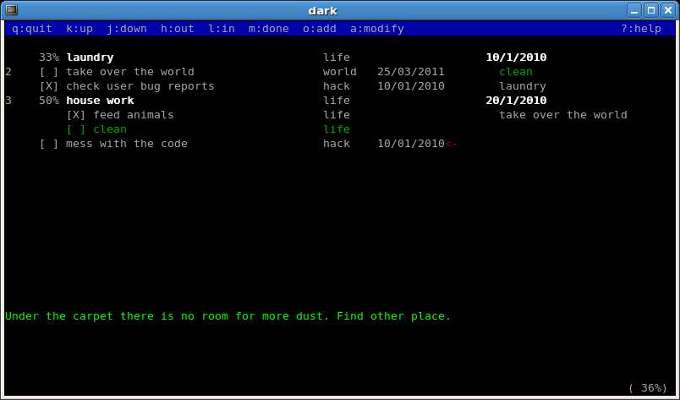Github is awesome and still improving, but sometimes I’d prefer to have some of my repositories hidden from the eyes of the public – not so much because of the code value (though that is also important sometimes), but rather because those repositories are all “work in progress” or “short-lived” and may have so much junk in them at some moments in time that it would simply be too embarrassing to publish this untidiness.
Previously, I’ve used gitosis to setup git repository hosting on my server. I’m still using it for long-living projects, but I’m now lazy enough to dislike the steps needed to setup a new repo (and I’m creating more and more new repos, some of which are likely to die very young). Some kind of GUI would help, but gitweb seems not that useful to me (here’s how to make it work with gitosis, and another recipe, or maybe just try gitosis-web or gitosis-web-admin).
Another downside is that gitosis is no longer actively maintained and was even removed from ubuntu repositories. Suggested course of action for gitosis users is to migrate to gitolite. However, basic design of gitolite is the same, so personally (looking for something easier to use) I see only minor gains in this migration (which I’ll have to perform anyway sooner or later).
Another interesting self-hosted option is girocco. Too bad I have absolutely no experience with http://repo.or.cz/, so it’s hard to tell if girocco is convenient to use or not… Comments are welcome.
Using dropbox for git repositories (also here) seems a nice and fairly easy option, with only a few downsides: it’ll eat your dropbox space (which is still much more than you get from free git hosters), and it isn’t that easy in a multi-user environment. Also, you will have to setup dropbox on your headless servers where you may want to run your code, which isn’t exactly what I’d want to do. Same arguments apply to git on google drive.
An alternative to various self-hosted systems would be to use an existing system with free private projects. Git wiki has a list of hosts to start with.
Here’s a brief summary of the options I’ve found relatively attractive (see below for my experience with 3 of the listed services). (See also this recent comparison.)
Initially, I found GIT Enterprise and Assembla to be the most attractive options to try. After trying both, I found Assembla faster and generally more attractive to work with. It wasn’t immediately obvious how to create more than one source repository, but after figuring that out everything is smooth.
However, after trying BitBucket, I had immediately switched all my assembla repositories to it  BitBucket is just like github, but with free private repositories. It also has an issues tracker and a wiki. It even allows small teams to work on private repositories!
BitBucket is just like github, but with free private repositories. It also has an issues tracker and a wiki. It even allows small teams to work on private repositories!
![]()

